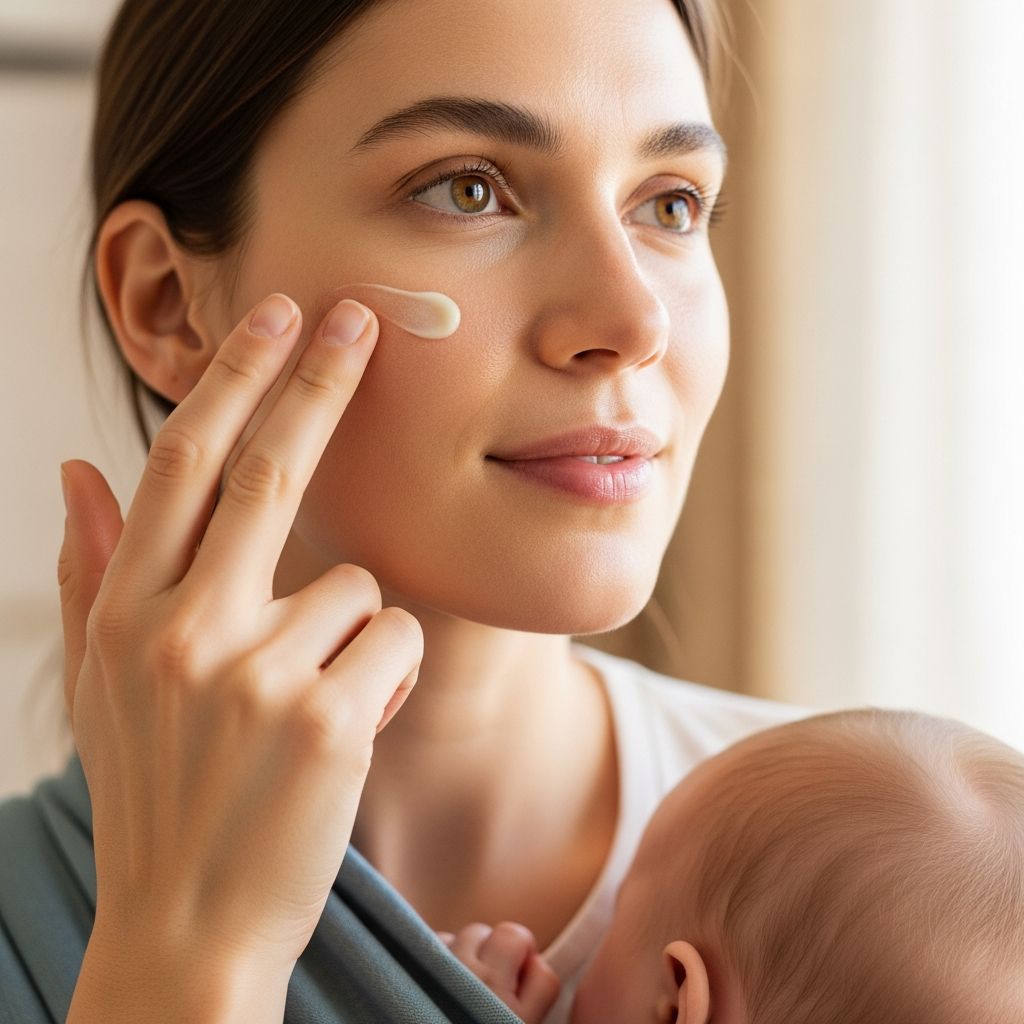Can You Use Retinol While Breastfeeding? A Complete Guide
Essential insights on retinol safety for breastfeeding mothers, exploring risks, expert advice, and gentle alternatives for radiant skin.

Can You Use Retinol While Breastfeeding?
For many, retinol is a gold standard in skincare—praised for its ability to target fine lines, acne, and uneven skin tone. However, for breastfeeding mothers, concerns abound regarding its safety. This guide explores the research, expert opinions, potential risks, and safer alternatives for postpartum skincare.
Understanding Retinol and Its Variants
Retinol is a derivative of vitamin A and is widely found in over-the-counter (OTC) skincare. It comes in varying strengths:
- OTC Retinol: Lower concentrations, milder effects, popular for anti-aging and skin renewal treatments.
- Prescription Retinoids: Includes stronger compounds like tretinoin, adapalene, and isotretinoin (Accutane), used primarily for severe acne or intensive anti-aging regimens.
Both forms can be absorbed by the skin to some extent, but their safety profiles differ significantly, especially for women who are nursing.
Is Retinol Safe During Breastfeeding?
The safety of retinol while breastfeeding is a subject of ongoing debate. Here’s what the current guidance and research indicate:
- Limited Evidence: There is no robust clinical research confirming the complete safety or danger of topical retinol during lactation. Most expert guidance relies on caution due to lack of data.
- Medical Recommendations: Major authorities such as dermatologists, pediatricians, and organizations like the American Academy of Dermatology generally recommend avoiding both oral and topical retinoids during breastfeeding.
- Oral Retinoids: Drugs like isotretinoin (Accutane) are strictly contraindicated due to their well-known risk of causing birth defects and systemic exposure.
- Topical Retinol: The risk is theoretically lower due to much lower absorption rates compared to oral forms, but transfer to breast milk is possible—and definitive safety data is lacking.
Key Takeaway Table: Retinoids and Breastfeeding Safety
| Type | Common Uses | Safety During Breastfeeding |
|---|---|---|
| Oral Retinoids (isotretinoin, acitretin) | Severe acne, psoriasis | Unsafe. Avoid entirely. |
| Prescription Topical Retinoids (tretinoin, adapalene) | Acne, anti-aging | Best Avoided. Higher risk, no proven safety. |
| OTC Retinol | Anti-aging, skin renewal | Low risk but no proven safety. Prefer to avoid. |
Why Are Retinoids a Concern for Breastfeeding Mothers?
There are several reasons why retinoids—especially prescription-strength—are approached with caution during nursing:
- Risk of Infant Exposure: Even though topical retinol is absorbed through the skin in much smaller amounts, there remains a small risk that some may enter breast milk and reach the baby, whose liver is still immature and vulnerable.
- Lack of Safety Data: No large-scale studies have conclusively evaluated how much, if any, retinol transfers to breast milk and if it could harm a nursing infant.
- Potential for Skin-to-Skin Transfer: Applying retinol on areas (like the chest) that come into contact with your baby increases the risk of direct transfer to your child’s skin or accidental ingestion during breastfeeding.
If You Have Been Using Retinol While Breastfeeding
If you have unknowingly used retinol during lactation, don’t panic. Here’s what the experts recommend:
- Stop using the product immediately to prevent further exposure.
- Discuss your history and concerns with a healthcare provider or pediatrician for individualized guidance.
- Monitor your baby for unusual symptoms (such as feeding issues, rash, or changes in behavior), and report anything concerning to your provider.
- Short-term, limited use—especially of milder OTC forms—is likely very low risk, but it’s always best to err on the side of caution.
Assessing Your Situation: Factors That Influence Risk
- Duration of Use: Short-term use generally carries less risk than ongoing, long-term application.
- Product Strength: Milder, OTC formulations are associated with less exposure compared to higher-concentration prescription products.
- Application Site: Avoid applying to any area that will directly contact your baby’s skin, especially the chest and nipples.
Expert Perspectives and Nuanced Opinions
The absence of conclusive safety studies leads most experts to recommend a cautious approach:
- Dermatology and Pediatric Societies: Typically urge against all retinoid use during breastfeeding until more data is available.
- The Infant Risk Center: Suggests topical retinoids have extremely low absorption and are “generally considered safe” with correct use—as long as the chest is avoided.
- Practical Reality: Some professionals acknowledge that topical retinol is unlikely to harm the baby when used with extreme caution, but the official stance remains “better to avoid”.
Best Practices: Skincare Safety for Nursing Mothers
- Avoid retinoids of all types during breastfeeding whenever possible for maximum protection.
- If you feel you must use a retinol product, never apply it to the chest or areas that may contact your child.
- Choose gentle, proven-safe alternatives for skin renewal or brightening during lactation (see below).
- Consult a dermatologist or pediatrician about specific products or routines.
Safer Skincare Alternatives for Breastfeeding Mothers
Desiring radiant, healthy skin shouldn’t stop during breastfeeding. Fortunately, there are alternatives that are widely recognized as safe for use in nursing mothers:
- Vitamin C (Ascorbic Acid): Brightens skin, combats oxidative stress, and supports collagen without the risks associated with vitamin A derivatives.
- Hyaluronic Acid: Provides powerful, non-irritating hydration suitable for all skin types.
- Niacinamide: Effective for brightening, calming inflammation, and strengthening skin barrier.
- Azelaic Acid: Addresses acne and pigmentation, and is considered safe in pregnancy and breastfeeding.
- Mild Alpha Hydroxy Acids (like lactic acid): Can gently exfoliate and brighten skin without significant absorption concerns.
Always check product ingredient lists, avoid harsh treatments (strong peels, unproven actives), and consult with skincare professionals as needed.
Frequently Asked Questions (FAQs)
Q: Can I use any form of retinol or retinoid on my face while breastfeeding?
A: Medical organizations generally recommend avoiding all forms of retinoids—including OTC retinol—while breastfeeding because their safety hasn’t been conclusively proven. If you decide to use them, avoid areas that may contact your baby and consult your provider first.
Q: Is it safe to resume retinol once I stop breastfeeding?
A: Yes. Once you have fully weaned your baby, you can safely reintroduce retinol and retinoid products into your skincare routine, following standard usage guidelines.
Q: Are there any studies showing that topical retinol causes harm to breastfed babies?
A: No conclusive studies have shown topical retinol harm for nursing infants, but the lack of data means safety can’t be assured—prompting experts to recommend caution.
Q: Can I use other anti-aging ingredients instead of retinol?
A: Yes. Safe alternatives include vitamin C, hyaluronic acid, and niacinamide. Always check with a healthcare provider before trying new products during lactation.
Summary: Retinol Use and Breastfeeding
- Retinol and other retinoids are best avoided during breastfeeding, per most expert opinion, due to inadequate safety data.
- If you’ve used retinol while nursing, stop and consult a healthcare provider for guidance.
- Consider gentle, safe skincare alternatives for brightening and renewal during the postpartum period.
Prioritizing your baby’s safety is key, but effective and safe skincare routines are possible. When in doubt, seek personalized advice from healthcare and skincare professionals.












